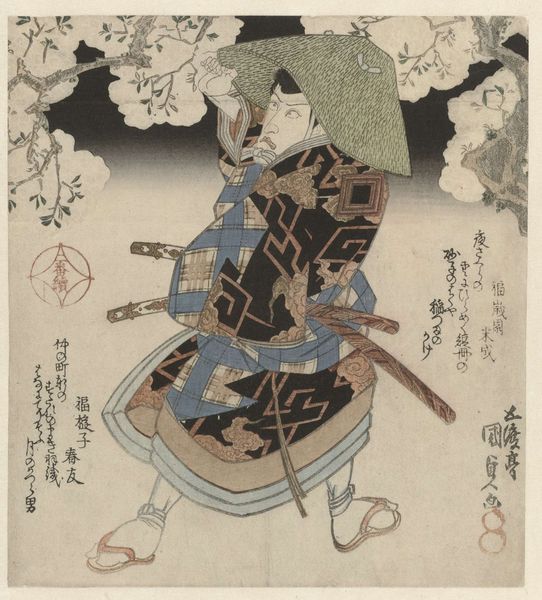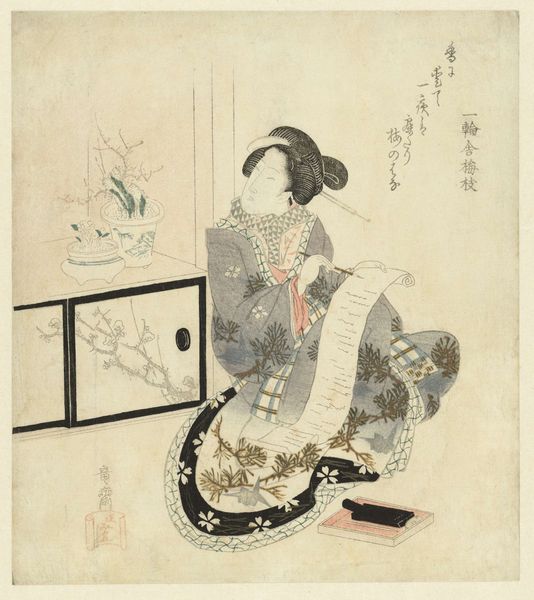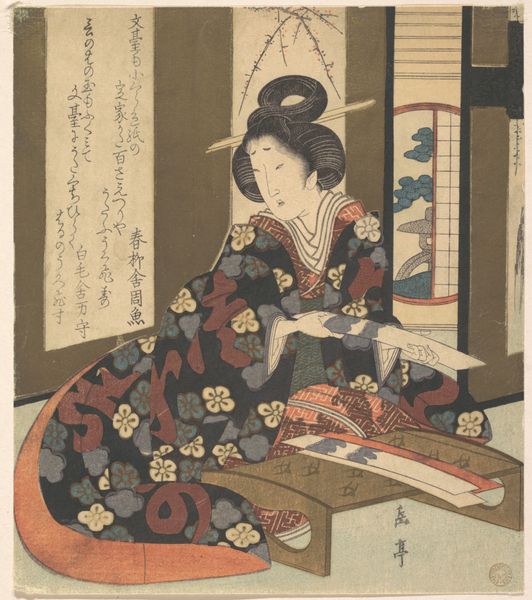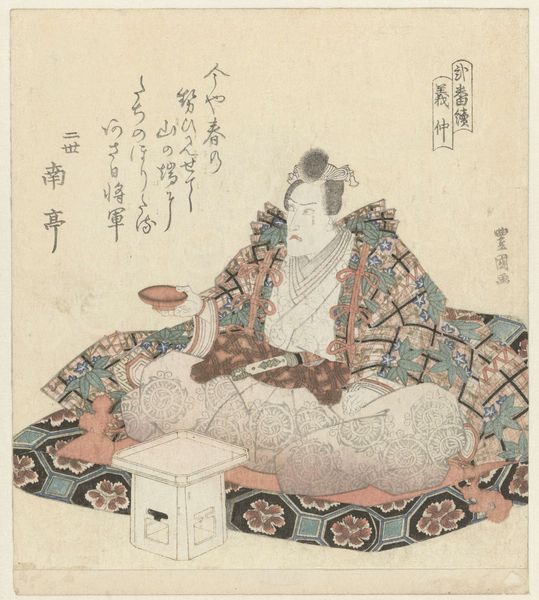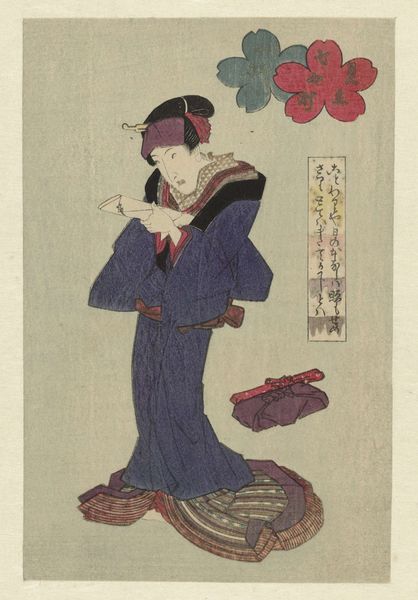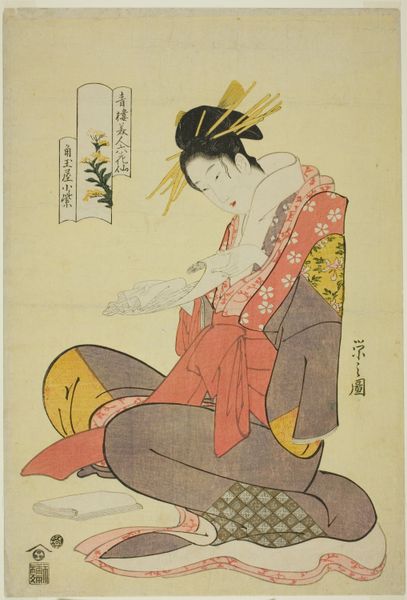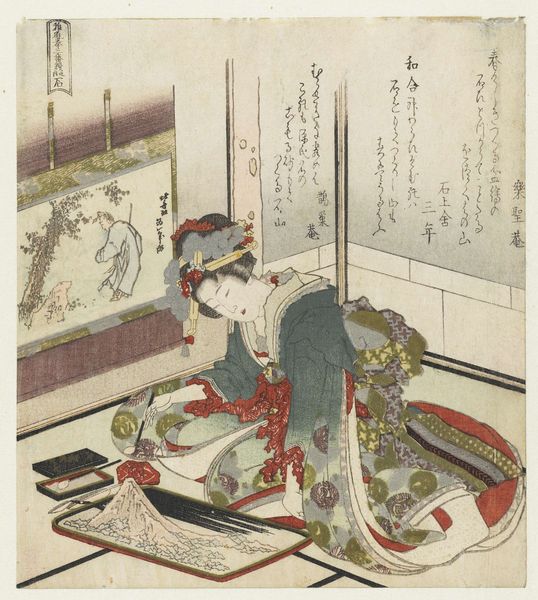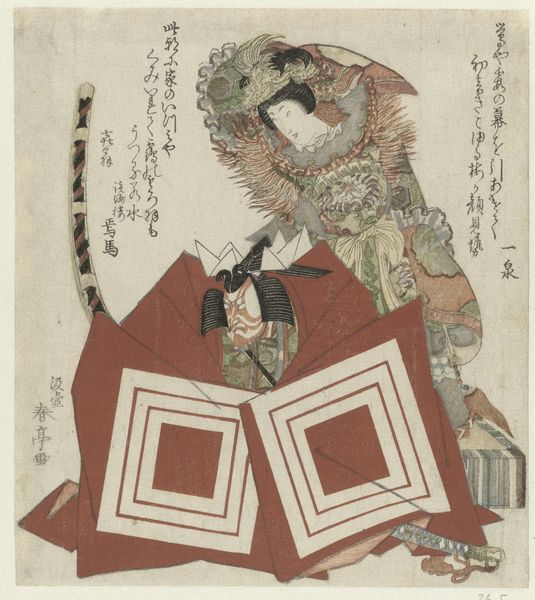![['Man at His Dressing Table', 'Sekidera Temple'] by Utagawa Kunisada](/_next/image?url=https%3A%2F%2Fd2w8kbdekdi1gv.cloudfront.net%2FeyJidWNrZXQiOiAiYXJ0ZXJhLWltYWdlcy1idWNrZXQiLCAia2V5IjogImFydHdvcmtzLzFkODliMTI1LTlmMWItNDYyNi04ZTZlLTE5ZGU0NTZjYTFjMC8xZDg5YjEyNS05ZjFiLTQ2MjYtOGU2ZS0xOWRlNDU2Y2ExYzBfZnVsbC5qcGciLCAiZWRpdHMiOiB7InJlc2l6ZSI6IHsid2lkdGgiOiAxOTIwLCAiaGVpZ2h0IjogMTkyMCwgImZpdCI6ICJpbnNpZGUifX19&w=3840&q=75)
print, woodblock-print
#
portrait
# print
#
ukiyo-e
#
historical fashion
#
woodblock-print
#
genre-painting
Dimensions: height 193 mm, width 126 mm
Copyright: Rijks Museum: Open Domain
Curator: Looking at "Man at His Dressing Table," or sometimes referred to as "Sekidera Temple," a woodblock print made by Utagawa Kunisada around 1825 to 1830. The piece presents a rather intimate scene of a man grooming himself. Editor: The initial impression is of controlled theatricality. The arrangement of forms is deliberate, yet possesses a strange austerity. The palette is vibrant, and the figure is strongly grounded with the dressing table components arranged almost as a stage setting. Curator: Indeed. We might interpret his actions symbolically. The dressing table set suggests a liminal space where the actor prepares for a role—a mask to meet the world. There are strong conventions tied to color as well: purple historically signified status and prestige in Japanese society, thus augmenting our read of class. Editor: That brings up a point about structure. Note the almost geometric nature of the composition – the rectangularity of the boxes contrasts the swirling patterns on the robes. Further, the floral emblem hovers above like an indicator that this is a theatrical portrait; or an actor applying kabuki makeup. This division lends dynamism but also directs focus to the figure. Curator: Precisely. The mirror itself is also symbolic, a reflective surface that compels both introspection and presentation. Kunisada utilizes mirrors often, which culturally represent dualism; a face to yourself, and one you prepare to present. The practice of beautification could perhaps relate to societal obligations of performance within ukiyo-e culture. Editor: What is remarkable, formally, is the controlled chaos within each of these divided planes. The texture created via printing lends a palpable quality, emphasizing the surface quality which feels in sharp relief against its muted beige ground, thus creating a beautiful interplay of color, form, and surface texture, contributing significantly to its aesthetic impact. Curator: The convergence of these visual cues invites us to contemplate the complexities of identity in Edo period Japan; societal role and performative representation in the culture that time encompassed. Editor: Yes, beyond subject, the print resonates deeply with its bold composition. I am consistently drawn back to Kunisada’s sophisticated arrangement of positive and negative space in such an intentionally confined stage. Curator: Well said. A piece to reflect upon, both literally and figuratively.
Comments
No comments
Be the first to comment and join the conversation on the ultimate creative platform.

